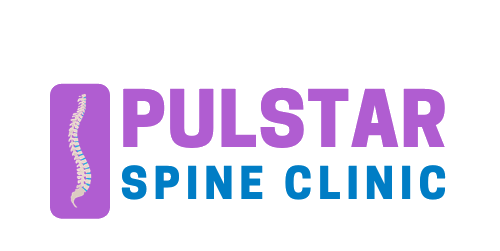Sciatica Treatment – Explore treatment options for Sciatica
Many people can overcome sciatica without any need for a visit to the doctor. The problem can resolve itself within weeks, or even some days. So the sciatica treatment is within your reach.
Some other individuals, however, cannot do without seeking the help of a medical professional to overcome it. This is advisable when symptoms show no sign of abating after all you might have done to combat them.
There are a variety of options available for sciatica treatment. The appropriate one will depend on the duration, severity and causative factors, among others. A combination of options may be required for effective management.
Common Sciatica Treatments
Let’s look into the normal treatments that are quite common.
Nonsurgical Treatments
There are certain things you can do at home to fight sciatica leg pain before you need to run to your doctor for help. Self-help approach may be of assistance when the pain is not disrupting your regular daily activities. These can go a long way toward relieving pain and neurological symptoms.
The nonsurgical sciatica treatment options you can consider for managing the pain include:
Bed rest
Some cases of this leg pain can improve with proper bed rest. These are usually the types that are aggravated when standing or walking. But the bed rest should ideally not be longer than three days before you resume your regular activities.
Hot and cold packs
Heat and ice therapy is a popular first step for managing most types of pain. They are effective especially the acute kind. You can relieve sciatica symptoms by applying hot or cold packs for several minutes a few times daily.
It is common practice to use ice packs first, followed by heat. You can reduce the adverse effect on the skin by placing a towel between it and the ice when applying.
Medications
Over-the-counter pain medications can, of course, help in dealing with sciatica. These are often the first line of intervention for some. Acetaminophen and nonsteroidal anti-inflammatory drugs (NSAIDs) can be quite helpful. You can consider medicines such as ibuprofen and naproxen.
You can request prescription medications if OTC offerings don’t seem to be improving your symptoms. Your doctor might prescribe you with stronger anti-inflammatories, narcotic medications, or muscle relaxants. Anti-seizure medications and tricyclic antidepressants can sometimes help.
Medications should ideally not be used for longer than two weeks.
Steroid Injections
These may also be recommended to fight inflammation that may be contributing to your pain. Epidural steroid injections are more efficient than oral steroids. In that, they can better penetrate the affected area to reduce inflammation.
Surgical Treatment
You are probably a candidate for surgery if nonsurgical treatment options do not improve your symptoms. This is thought to be the last resort for roughly 5-10% of those affected by sciatica. Surgery may still be your last resort if you only have mild symptoms that have failed to resolve within three months.
Surgery is important to prevent things from getting worse. Sciatica can progress to cauda equina syndrome. That disorder can cause loss of bowel and/or bladder control. It can even lead to paralysis.
There are two major types of surgical procedures used to fight leg pain. These are diskectomy and laminectomy.
Alternative Sciatica Treatments
Some patients have seen improvement in sciatica symptoms through the use of alternative therapies. These include:
Acupuncture
This ancient Chinese practice is known to offer numerous health benefits. Acupuncture has been recognized by respected health organizations, including the U.S. Food and Drug Administration, as being effective for relieving pain.
Tiny needles are inserted around the area of pain to balance energy flow and provide relief.
Chiropractic Care
Healthcare professionals trained to diagnose and treat neuromuscular disorders. They can help you get relief from sciatica symptoms. They can be helpful in ensuring proper alignment of the spinal column through manipulation techniques and spinal adjustments.
This approach can correct certain underlying issues that often contribute to sciatic nerve pain.
Massage
This alternative therapy has also been proven to help people with sciatica. Massage relaxes your muscles and improves blood circulation. It also boosts the release of the feel-good chemicals called endorphins. These effects can go a long way to provide you with pain relief.
Yoga
Yoga biofeedback and cognitive-based therapy (CBT) can help people with sciatica in one way or another as well.
Guarding Against Recurring Sciatica Symptoms
Leg pain from pinched or irritated nerve roots improves within weeks, even a few days, in many of those affected. Its episodes typically abate within a period of 6-12 weeks.
It is helpful to consider maintaining a more active lifestyle after initial pain relief. Regular exercise and physical therapy help in preventing a recurrence of possibly incapacitating sciatic nerve pain.
It is beneficial to take steps that can protect you against spine-related issues. Such steps include maintaining good posture. If your job is the type that involves sitting for most of your working hours, it helps to get an ergonomic office chair, if possible.
Apart from your doctor, there are other professionals you can consult for help especially if you are interested only in nonsurgical treatments. They include chiropractors, physical therapists, and physiatrists. These are trained in techniques that can help to relieve pain, including sciatica.
It is, no doubt, cheering for people with sciatica to know that the symptoms can resolve on their own in some cases. If they persist or worsen, however, you should immediately get in touch with a medical professional for proper treatment. It is always better to have such supervise the treatment of any type of sciatica.


